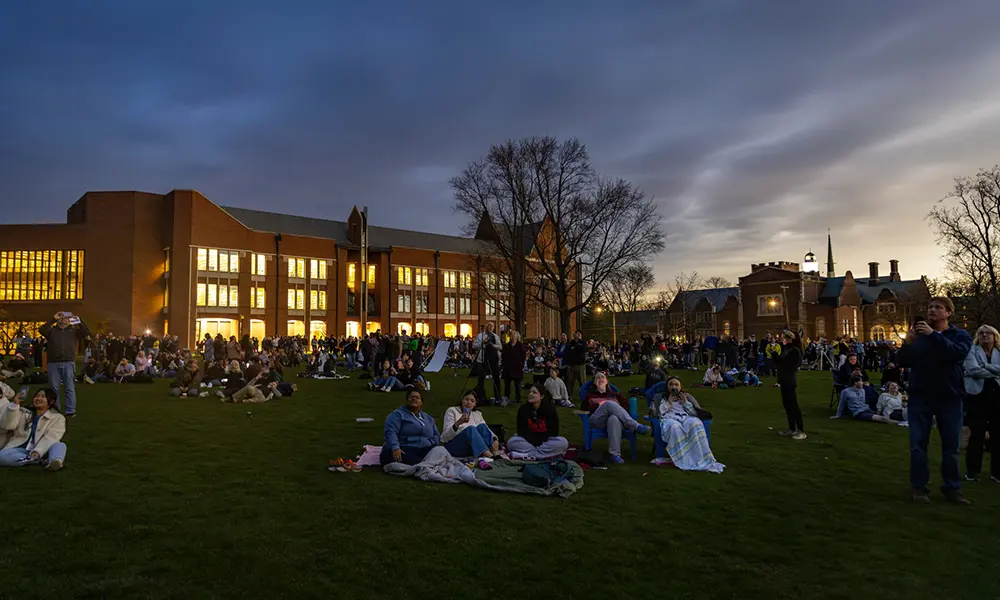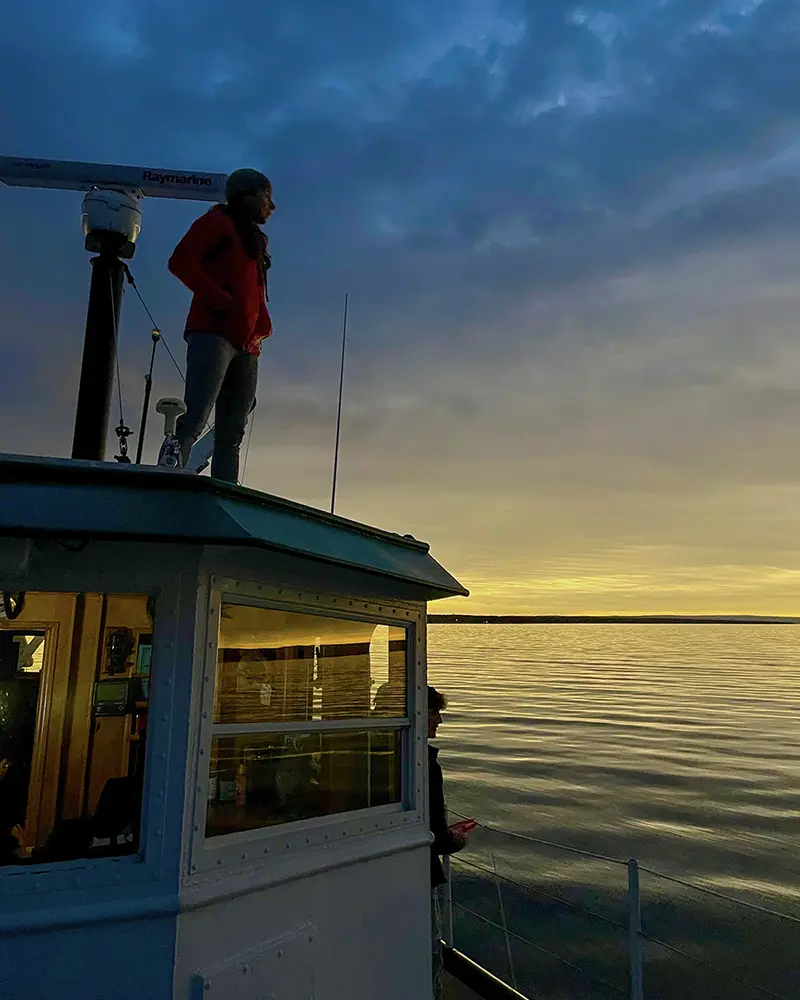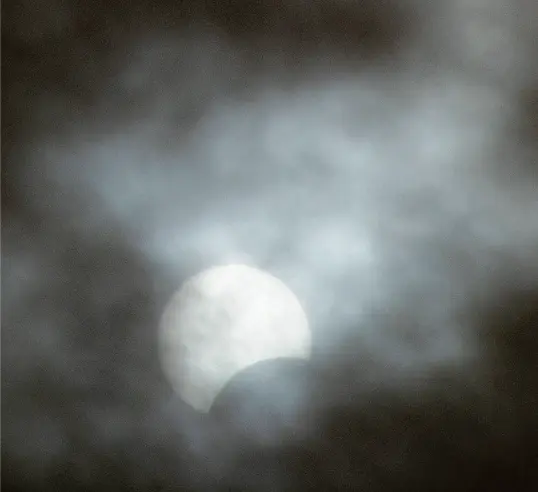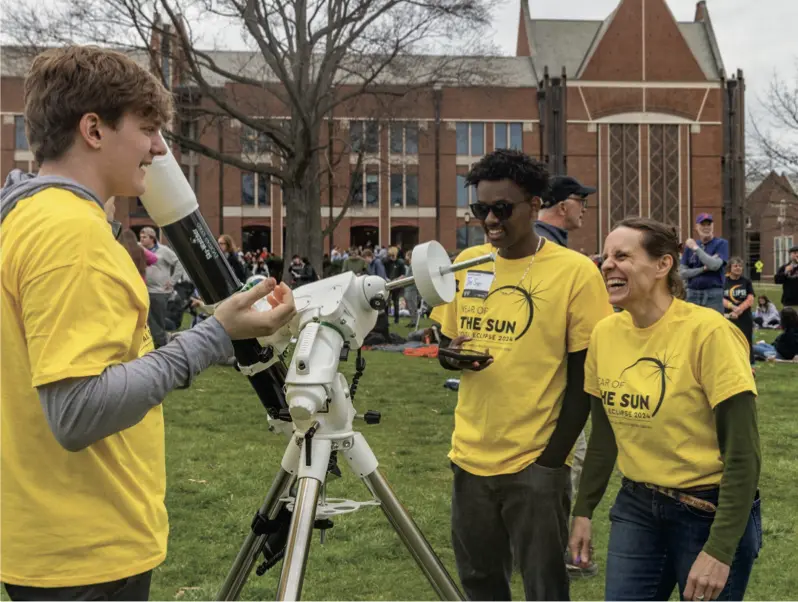The Pulteney Street SurveySummer '24

From Stern Lawn, students, faculty and alumni stare up in awe at the eclipse as it approaches totality.
Light in April
This spring, the HWS Year of the Sun programming culminated with the total solar eclipse.
On April 8, the campus community, joined by alumni and friends from across the country, donned their special glasses and looked skyward as Geneva was cast in darkness.
Throughout the afternoon, activities and information stations were set up across campus. Students from the HWS Astronomy Club assisted visitors in viewing the eclipse through telescopes. In front of Smith Hall, Classics and history students described how the solar event has been observed and understood since ancient times. Along St. Clair Street, a scale model of the solar system offered a point of reference for the size of planets and the distances between them.
By 3:20 p.m., the temperature began to drop, the sky darkened, and soon the black disk of the moon passed in front of the sun, revealing a corona of light that observers could view with the naked eye. At this point, as James Fenimore Cooper noted when the 1806 eclipse passed over Western New York, “A breathless intensity of interest was felt by all.”
Photos
 As the HWS community gathered on Stern Lawn to observe the eclipse, Professor of Biology Meghan Brown and student researchers were aboard the HWS research vessel, the William Scandling, studying how the change in light impacted the daily migrations of zooplankton that feed on algae in the surface waters of Seneca Lake.
As the HWS community gathered on Stern Lawn to observe the eclipse, Professor of Biology Meghan Brown and student researchers were aboard the HWS research vessel, the William Scandling, studying how the change in light impacted the daily migrations of zooplankton that feed on algae in the surface waters of Seneca Lake. From the Goldstein Family Carriage House, Professor of Art and Architecture Christine Chin captures this photo of the eclipse before the moment of totality.
From the Goldstein Family Carriage House, Professor of Art and Architecture Christine Chin captures this photo of the eclipse before the moment of totality. Jack Norkus ’25, Biruk Nardos ’25 and Associate Professor of Physics Leslie Hebb share a laugh before the eclipse reached its peak. Hebb organized the event and coordinated many of the day’s activities, such as the introductory video that played in the library, explaining the science behind solar eclipses and eye safety recommendations.
Jack Norkus ’25, Biruk Nardos ’25 and Associate Professor of Physics Leslie Hebb share a laugh before the eclipse reached its peak. Hebb organized the event and coordinated many of the day’s activities, such as the introductory video that played in the library, explaining the science behind solar eclipses and eye safety recommendations.
